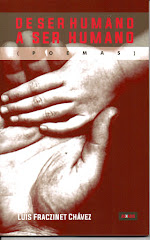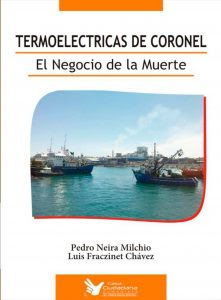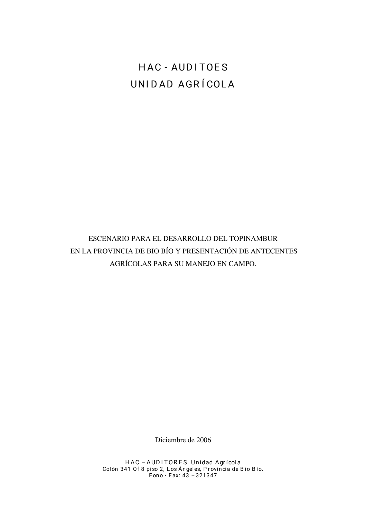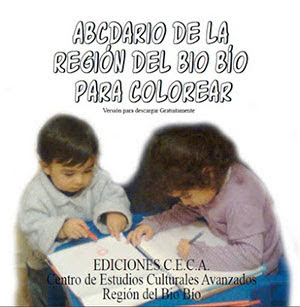lunes, 4 de abril de 2011
What is the Creative Economy?
What is the Creative Economy (CE)?
The Creative Economy concept (CE) arises from the need to shape and differentiate the production process in Goods and Services (BYS) is already being developed naturally in the markets and at the time of differentiation, marked a new stage in economic development, thus creating a new mode of production, an alternative to traditional production process. The latter is characterized by a generation mechanism Bys responding to a model in the process, form and content, and which conform to the basic needs of the market demand.
The typical example of the traditional economy lies in the industrial production of goods (doors with certain size) or service (office) where the constant replication of the BYS is the need of the market where the product characteristics does not vary time. That is, where one type of door, with dimensions or quality, is what the housing market rural housing (for example) requires to meet its own production process. In the case of the doctor's office, the community needs (demand) of a space where they are expected meet the basic health needs, which, statistically, are common depending on a variety of diseases treatable by the staff assigned to a clinic.
Ie Bys main characteristic, as a result of the market, the stability in production, in the form and content, but what has changed is the presentation that is often changed through a process of marketing.
In the case of the CE is expected to include Bys, both in production, form and content of the product, new elements that had not previously been used both in the production process or that have not been included in the final product and, moreover, born of the creative capacity of the individual. This does not mean we can create a new computer with colored electrical connections, but it can be a notebook as a source of energy is the kinetic energy provided by the keys when typing. Did you like the idea? The just created.
The CE comes from the individual and their ability to "Create Something", using cognitive qualities conscious or unconscious, to generate one or one hundred ideas and possibilities to give shape to this idea, producing a new good or service ( BS) that is integrated into the market.
The CE assigns value to the final product (result of the creative process) either in the intangible, the form of the placing on the market is recognizing the intellectual value of the building or, as tangible, assigning monetary value to the product generated by this creative process.
The CE is observed in the first instance in the world of Art and Culture (with all the definitions that exist for it). It is from this area of the economy that is recognized and rescued the concept, which is supported in the individual's ability to be creative. This property is set in motion by the artist or the farmer and whose final product (BS) is integrated into the market, theoretical or actual place where these Bys traded. It is in the market where the value that takes the product is weighted by the consumer, between preferences and individual needs.
Both concepts that interfere with the decision of consumer preferences and needs, should be in reverse order, but you have to doubt that the individual consumer behavior allows it to differentiate or order the priorities in a morally correct.
The CE is elected by States for inclusion in their policies of economic development. Thus, in Chile, the CE is the policy framework for building INNOVATION CORFO, or to promote the undertaking of SERCOTEC, citizen participation in institutions such as CONAMA via the FPA. State policy is applied in all areas where the State is interference by a tool called "Bidding Fund" and where the State acts as a promoter of economic development.
Thus we have a little less than 20 years applying concepts of CE as an engine for generating new spaces for economic development.
In the case of the EC applied to market Bys No social, environmental or artist (for our theme, Cultural Goods and Services not), is expected to finance and run a very good idea, it acts as a business model replicable in other circumstances with the same or equivalent requirements, waiting for it similar results.
As a group, the state expects to fund 1,000 ideas or a good idea is to generate a contribution to economic development from the production process to include the product on the market, encouraging the development of an initiative to link higher in this case the creation or strengthening of an industry (again emphasize: it is expected). Ie: It is expected that 1000 individuals, acting as individuals generate a contribution or social change. What is it consistent?
In cases where the economic viability of a project or idea generates positive outcomes for the entrepreneur is when determining the business model to recommend.
In the case where the social return is essential for economistic aspects, is when it is expected that the act of creativity is a huge and positive impact on social ... for two reasons:
1) Because the act of creativity born of a feeling and moral needs more beautiful than the mere act of reflection for financial gain. In this sense the political ideology of the operator is carried out through the art of cultivating the art and which art is expected to channel the aspirations of the artist to the community.
2) The State has made a bet and has institutionalized the process of competitive funding as production tool of tools "that create impact on the economic, social and cultural development, giving rise to citizen participation in solving problems and providing visibility into government policy (on duty) situation than other programs implemented by the State NO.
I take the example of a community health program or a program to protect wildlife born with a low profile on communication or a low dynamic social impact, not in the expected social return. While there are programs that arise from the government's need to establish policies beyond the contingent, lack of mobility and stimulation that an individual brings his own idea, particularly because there is the individual's own desire to achieve success and particular ambition not to allow the state and working machine. Ie: Governments integrate individual variable to the state apparatus to generate a dynamic that does not possess.
The error of the CE
An error in the design of the CE is its justification, not its existence. As the definition states a nature focused on the individual social impact is expected to promote the success of a creation. Because the state wants to massively the wealth generated by the success of one is to establish programs to fund more "creative processes" (Competitive Funds). It is expected that 95% of projects funded to meet the standard of the traditional and the remaining 5% (the never well weighted margin of error) is out of the norm and generate some great ideas on how creative and as such, very good replicate models and these models applied to other areas, generating an impact on both economic development and socially. That is, it is expected that a thousand or individuals (or projects), acting as individuals, to develop an exchange or a permanent benefit socially.
In this case the exception does not satisfy the rule. If two people GOOGLE successfully created, it would be logical to think that the model was successfully replicated by other 1,000 pairs of friends and today we have 1,000 GOOGLE successful Internet certainly is not.
The innovative model is creating a market for a scope restricted to their idea, that is, in the process of creating a model is shown to occupy a space that already exists but has been or is being abandoned by another product. Therefore, their impact can not be greater than the positive impact has been delivered by the above product. When the innovator creates a new market space unconnected previous product should discuss the need for the product on the market. Do celebrity TV spots? A cell whose main features are your speakers? A shuttle service to passengers whose seats are egg-shaped? Products and services that are not born of a need, but create a new market space and thereby create a new consumer need.
Leaving aside the needs of the community, the market operates for the purpose it is proposed. Similarly, all forms of production with that premise, are validated with indicators of macroeconomic development. Leaving aside the nation's needs, satisfiers Market operates under the premise of promoting individual success, hoping that this success as a contribution to social development.
But when incorporating variables measuring cultural development, social, artistic and environmental issues, the market does not generate significant contributions and the State undertakes to apply, as the incumbent government, new policies and programs that reduce the problem "household "community. The explanation of the state to its inefficiency as a promoter of social development is to "have to keep working" and the explanation for us as individuals, albeit painful and controversial, falls in the phrase: "It's a cultural problem of the Chilean." We used to live in a society where we are satisfied with work albeit inefficient, even our responsibility.
In The Culture of CE does not act the same way. (Worse)
In the case of Culture, being expected to implement a Social Performance CE, it can not be measured by direct indicators of individual satisfaction (individual assessment of the implementation of a project), and less linked and used as indirect indicators of development social (annual investment projects aimed at developing a specific credit line.)
Assessments of Effectiveness of EC are methodologically created to give the system feasibility. This includes the evaluation processes of Culture Fund (if any), assessments of effectiveness and efficiency of using EC fall into administrative proceedings that border on the protocol, with respect to meeting schedule. Proof of this is that no self-criticism and thus correcting the imperfections of the competitive funding policies and there is no correlation or estimate, or statistics of the originally desired impacts or individuals applying EC.
Competitive Funds fund good ideas and very good form, anyway, not only fund ideas and real impacts of cultural production. When lines of funding are more specific in theme, seeking to contribute to development among its objectives it becomes impossible to quantify, but common sense considered very necessary to maintain over time, such as Book Development Fund and Reading, where the evaluation is administrative in nature and no real social impact. To deny this assertion would only be necessary if officials prove a work of measuring and evaluating the impact with the Ministry of Education. We can dwell on all lines or competitive funds and the conclusion would be the same. Very good projects, but not very good impact. Clearly, there is a correlation of CE with the expected impact on society. Justified by showing examples of what may be valid to maintain this policy is to think that 5 projects Cultural Rights (Social, Environmental and Artistic) offset 95 other attempts that did not achieve their goal. When the efficiency of a funding program should show the numbers in reverse order. 95% good and 5% impact of the failed initiatives.
Even in the Economy Hard or all alternative models have demonstrated that a relationship exists Microeconomics (the subject of study is the company, in the case of the CE is the individual) and the macroeconomics (the study base are industries and large clusters of entities that are part of the supply and demand, in the case of the CE are the creative industries and social impact). That is, there are no econometric elements linking individual behavior and outcomes to social behavior and their level of satisfaction. However, it insists on implementing policies to encourage the individual, hoping to score with social impact.
The product of applying the current EC model is a society without cultural value beyond the arts curriculum of some heroes, historical death toll of any community, the event of municipalities, chauvinism networks associated with the elite culture heart of this, the possibility of some people who occasionally cultural activities, or the eternal effort to stay alive doing those little bit of culture to society. Interestingly, the common feature shared by these entities, both private and governmental, large and small, cultural survival is based on the participation of eligible programs based on competition. That is, the EC's monetary stimulation of the individual.
Worst of all this is in the results offered by the CE to improve our society and where the state as an engine for Social Development applies to the type of competitive funds such as citizen participation. This is not a challenge, but the next time you get out there I recommend you go out with a sheet and a pencil and make a list of things I would not want to see the next day. We live in an imperfect society, but I expect that the state or the market do its stickiness and thus evolve as a society, I will not be witnessed in my life that change, I alone am left with the phrase final and struggled to punch end conversations: "It is a problem of the Chilean Cultural."
The contribution of the creators of those working in difficult social environments, which are in constant struggle to generate environmental awareness is not in the grain of sand that makes its activity lies in the personal commitment that borders on the emotional and explained in the speech.
Luis Fraczinet
Unemployed Poet
Philosopher's Kitchen
Specialist in Mayan Sacrifices
Academic Department. Creativity at the University of Pelotillehue - UnPelo
Director of the Center for Advanced Cultural Studies C.E.C.A
Our Bio Bío.cl Earth Encounters
Spanish version
This is a C.E.C.A. Research

























0 comments:
Publicar un comentario